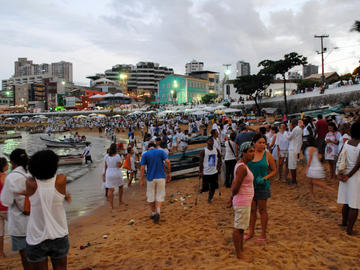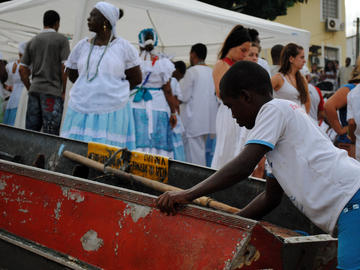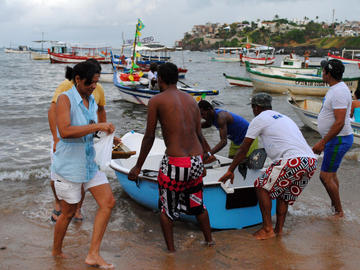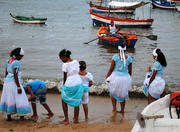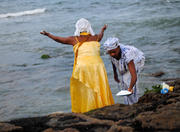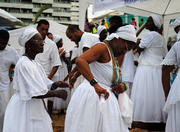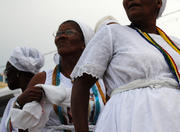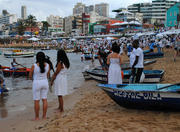Iemanjá Festival Picture 7
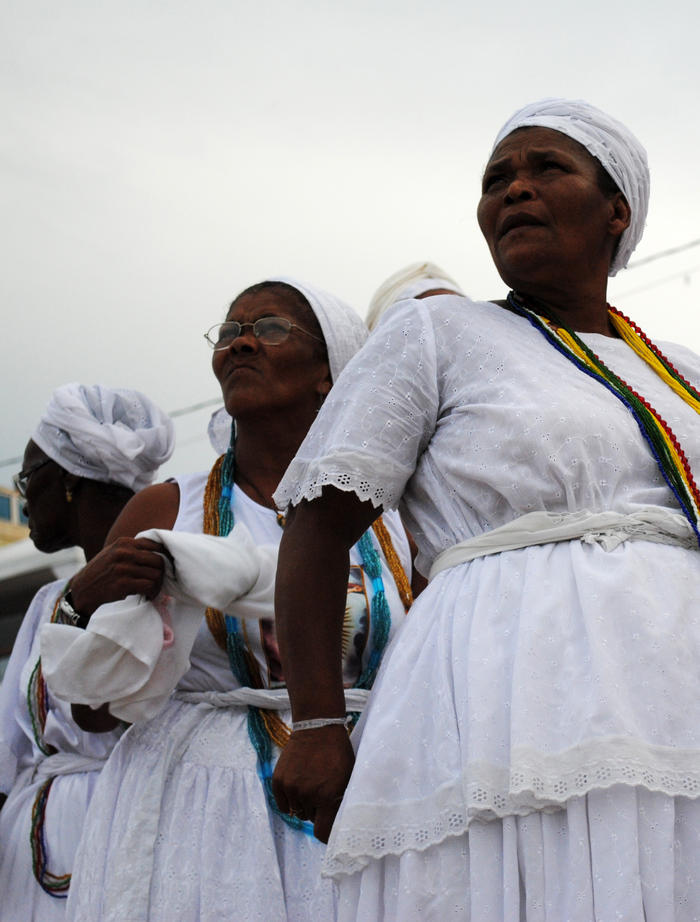
More information on Iemanja Festival Photo by: clarissapacheco
Iemanja Festival
The second day of February is the date most of the Rio Vermelho neighborhood. The tributes to Iemanjá attracts a crowd of people wanting to bring their offerings to the Mother of Waters, asking for protection, a ritual unique and exciting.
Flowers and perfumes are the favorite gifts she has received the orisha, deep sea Atlantic Salvador, unusual gifts and more like a palace blue and white with two meters tall. The offerings are taken to the house of the weight in the Fishing Colony of Red River where they will be distributed in several baskets placed on boats that leave for the sea to the sound of a popping of fireworks to finally be thrown overboard.
Red River streets, various drinks and food stalls are scattered on the sidewalks. Several houses hold private parties with DJs and musical acts, giving a pop tone to this party so traditional that fills in white and faith to the streets of the neighborhood. In the past the party experienced the presence of an electric trios that attracted more people. However, the uncharacteristic experience the essence of peaceful demonstration, generating several episodes of violence.
In 2008, for the first time in more than a century, the festival takes place amid the carnival and are provided for three days of celebration without the presence of triplets. Yemanjá is celebrated in many places in Bahia. She lives and is celebrated at Ribeira, Platform; Peninsula Humaitá, where it is the little church of Montserrat; Gameleira on the island of Itaparica, in Rio Vermelho Beach, opposite the church of Santana, and many other places known for their "sons and daughters of the saint", who will then deliver their gifts and to make their obligations.
TRIVIA
-The tradition of the festival in honor of Iemanjá began in 1923 when a group of 25 fishermen decided to offer gifts for the mother of the waters. At this time the fish were scarce in the sea. Every year fishermen are calling for the Iemanjá give them plenty of fish and a calm sea.
-At first, the celebration was done in conjunction with the Catholic Church in a show of religious syncretism in Bahia. In the 1960s, a priest would hurt fishermen, calling them ignorant by worshiping a mermaid. The picture caused a break with the church and from there the fishermen started to realize the only party in honor of Yemanja.
-There is a superstition about the gifts given to Iemanjá not sink, ending up on the beach. She said Iemanjá not like this and would have returned, causing great frustration to the devotees. In general, gifts made of lightweight materials tend not to sink or hollow. Even the main gift, made by fishermen, is free from this misery. Sometimes we had to tie it to something heavy so that it could sink.
-According to legend, the Seahorse is the guardian of the house of Iemanjá, being his messenger faster. It is common for images of this animal are offered by devotees. In 2007, the present chief of the fishermen was the image of a sea horse adorned.
-Major Gift: Every year a main gift is ready to be offered to Yemanja. Under him will ialorixá offerings prepared by the party responsible for the command. These offerings, whose preparations are surrounded by ritual and sacred and secret bases, takes seven days to get ready.
-Among the gifts offered to Iemanjá on February 2 we list the following: flowers, perfume, mirrors, various ornaments such as rings, necklaces, ribbons, earrings, combs, jewelry, jewelry, watches, makeup and even dolls, candles, drinks and foods such as pudding, baked beans with shrimp, onion and olive oil, champagne and others.
-On the streets of the Red River samba parade groups and ijexá wheel, capoeira, Afro blocks, costumed groups, marching bands and others. Some of these groups only parade the Feast of the Red River, a proof of the devotion of the people of Bahia.
- The sculpture of Iemanjá located in front of the House of weight was made in 1970 by Manoel Bonfim. It is a sculpture of a mermaid made of plaster, seated on a pedestal of concrete coated with various fixtures, shells and stones Portuguese. It is owned by the Fishing Colony Z1.
-There is now a concern among environmentalists warning about the gifts thrown into the sea that do not decompose. Many marine animals die after eating these goodies. The fishermen who organized the Feb. 2 are beginning to worry more about the ecological aspect involving the party.
More Photos of Iemanjá Festival Picture 7
